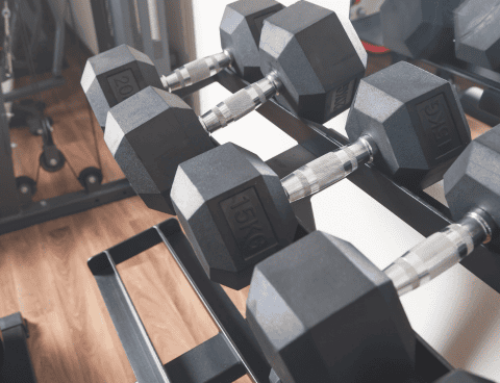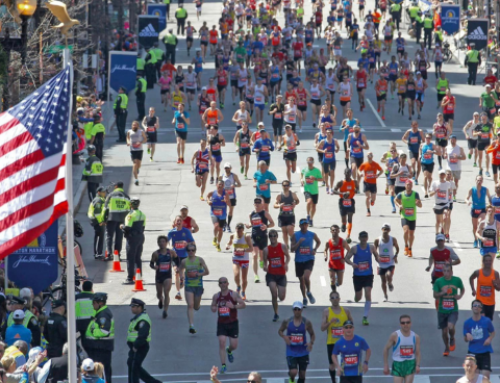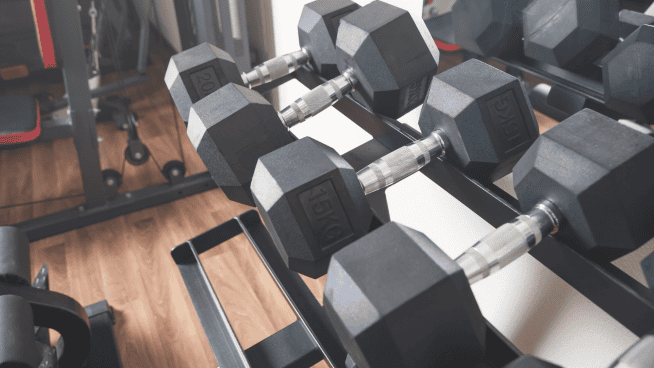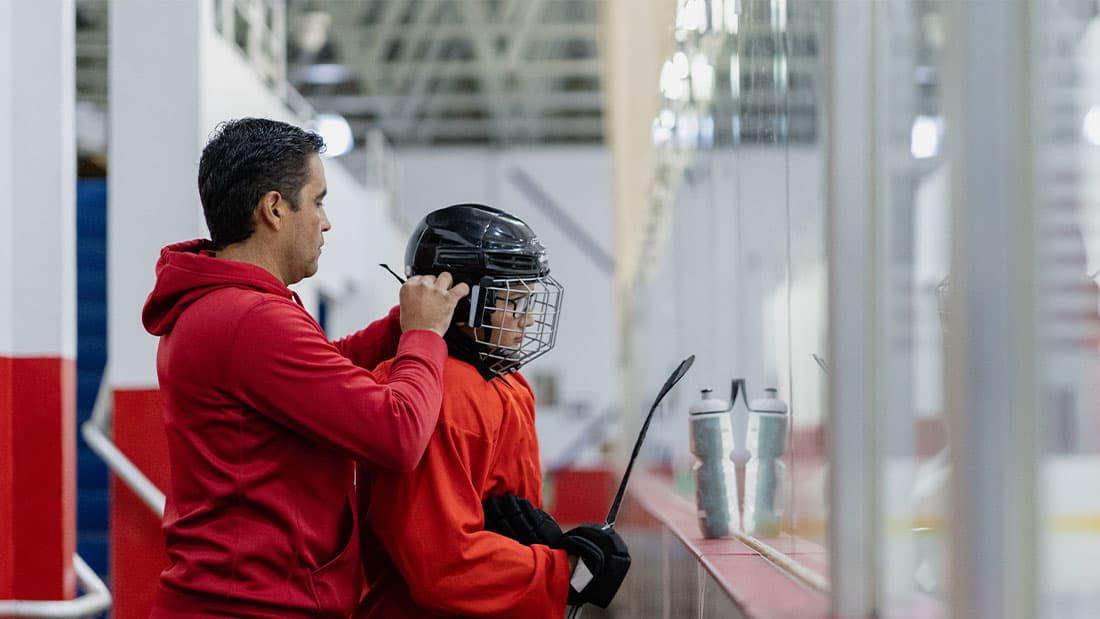Medicine Ball Training for Athletes
If you look around your gym, you might see medicine balls piled in a corner. Over the last two decades, they have made a resurgence as coaches have found them to be of use for different types of athletes. As materials and manufacturing have improved, the balls have moved from bladders to stitched leather to various hard-wearing resins. This means the bags can be slammed or dropped into hard surfaces or thrown far and we don’t have to worry about breaking them.
I use them in three situations:
1. Part of our warm-ups for weight lifting and athletics.
2. As resistance training for lighter, younger or beginner athletes.
3. For throwing and tossing as acceleration training.
I shall share how and why in this article.
Why medicine balls?
The term medicine ball was coined by Robert J. Roberts in 1876. He had been inspired by one of the stories in Arabian Nights, where an Eastern Potentate was advised by his physician to toss a large, soft ball of herbs a certain number of times a day until ‘he did sweat.’ Movement was recommended as medicine back in ancient times.
Roberts made a ball weighing 7-8lbs and sewn it like a baseball. He then recommended a series of exercises in his work with the Y.M.C.A. that included lifting, circling, and throwing the medicine ball. The balls may look and feel different, but Mr. Roberts would see many of his exercises still in use today.
Medicine ball Warm-Ups
Before working on specific preparations in our warm-up, we do general movements that use the whole body. We always put a coordination activity in there to help the athletes switch from work/ school mode to training mode. The looping-type activities advocated by Mr. Roberts fit this premise, especially when we add lower-body movements such as squats, lunges, and walking (forwards and backward).
An example of one of our warm-up sequences is here:
In these sequences, the goal is not to lift more weight; it is to link different body parts and improve synchronization: to link and sync. For younger athletes, the same sequence can be done with a football, soccer ball, basketball, or even a water bottle.
Resistance Training
Many gyms appear to have been built with football players or bodybuilders in mind (often by male strength coaches): big weights, endless platforms, 44lb barbells, and dumbells starting at 22lb. This is intimidating not only to many female athletes but also to juniors (rightly so: half the high school population is female, so why not think of their needs and put the correct equipment in?).
However, medicine balls are one way of introducing resistance training to younger, lighter, and beginner groups of athletes. Volleyball players are used to playing with a ball; it’s only a short step to giving them a heavier version. You are introducing resistance training on their terms, with a mode that they are already familiar with.
The medicine ball (like a dumbbell, sandbag, water bag, or Indian club) is much more maneuverable than a barbell, and that allows the athletes to make hundreds of different types of movements. If the lighter weight is used, there is less risk of injury and less need to over-coach technique: the athletes can get moving straight away rather than listen to a list of technical cues.
Examples of starter cues include:
· ‘Lift the ball above your head’’
· ‘Touch the floor with the ball.’
· ‘Loop the ball between your legs like a figure of 8.’
· ‘Sit on the bench and stand up: hold the ball any way you want.’
· ‘Write your name in the air in front of you with the ball.’
· ‘Write your name in the air to the side of you with the ball.’
and so on.
The beginners will be performing movements with resistance without realizing that they are getting stronger.
Once they are comfortable, I then introduce some sequences so that they gain some familiarity and consistency. I rarely do more than five repetitions of any exercise, finding it best to add variety.
Remember, the object of this strength training is to build a foundation across a wide variety rather than specialize in one or two movements and progress by adding load.
Here are two sequences we use:
Med ball warm-up 1:
Med ball warm-up 2:
Finally, the medicine balls can be used in conjunction with other forms of resistance training: bodyweight exercises, dumbbells, and so on, as long as they fit the plan and purpose of your training session.
Here is an example of young people doing a circuit:
You can see that the technique is imperfect but also how they are learning to control the medicine balls in a supportive and fun environment.
Throwing medicine balls
Obviously, you need space to do this: outdoors with a soft landing surface to protect the balls from damage is best. Most resistance training ends with negative acceleration: the weight has to slow down to stop under control. Throwing or tossing medicine balls allows the athlete to keep accelerating until they release the ball.
The throws can be done into the air, against a wall (make sure it is sturdy: I have seen several brick walls broken by repeated slams), or to a partner.
I would progress them in that order. Safety becomes more of an issue when heavy implements are being thrown, and there is less room for experimentation and discovery with groups. I line the athletes up and point in the direction that they have to throw, let them throw and then get them all to retrieve the balls at once.
Some ideas are:
- Standing toss (ball between the legs to start, then scoop up).
- Standing throw: overhead or rotational, starting at either side.
- Behind the head toss (face away from the target).
- Chest pass: standing and kneeling.
The progression to partner throws can be done in two stages:
1. Let the ball bounce before the partner, then pick it up and throw it back (reduces the time between throws).
2. Catch and receive the ball: this helps develop strength in the upper body and the ability to receive force. However, it does require the ability to catch well, so is unsuitable for many beginners. One way to reduce the force is to stand further away from each other.
Summary
There are many ways to use medicine balls, and they are an excellent change of pace from other forms of resistance training. Rather than think of them as ‘round’ dumbbells, I like to use them to do different and unique movements that develop the athletes’ all-around strength.
RECOMMENDED FOR YOU
MOST POPULAR
Medicine Ball Training for Athletes
If you look around your gym, you might see medicine balls piled in a corner. Over the last two decades, they have made a resurgence as coaches have found them to be of use for different types of athletes. As materials and manufacturing have improved, the balls have moved from bladders to stitched leather to various hard-wearing resins. This means the bags can be slammed or dropped into hard surfaces or thrown far and we don’t have to worry about breaking them.
I use them in three situations:
1. Part of our warm-ups for weight lifting and athletics.
2. As resistance training for lighter, younger or beginner athletes.
3. For throwing and tossing as acceleration training.
I shall share how and why in this article.
Why medicine balls?
The term medicine ball was coined by Robert J. Roberts in 1876. He had been inspired by one of the stories in Arabian Nights, where an Eastern Potentate was advised by his physician to toss a large, soft ball of herbs a certain number of times a day until ‘he did sweat.’ Movement was recommended as medicine back in ancient times.
Roberts made a ball weighing 7-8lbs and sewn it like a baseball. He then recommended a series of exercises in his work with the Y.M.C.A. that included lifting, circling, and throwing the medicine ball. The balls may look and feel different, but Mr. Roberts would see many of his exercises still in use today.
Medicine ball Warm-Ups
Before working on specific preparations in our warm-up, we do general movements that use the whole body. We always put a coordination activity in there to help the athletes switch from work/ school mode to training mode. The looping-type activities advocated by Mr. Roberts fit this premise, especially when we add lower-body movements such as squats, lunges, and walking (forwards and backward).
An example of one of our warm-up sequences is here:
In these sequences, the goal is not to lift more weight; it is to link different body parts and improve synchronization: to link and sync. For younger athletes, the same sequence can be done with a football, soccer ball, basketball, or even a water bottle.
Resistance Training
Many gyms appear to have been built with football players or bodybuilders in mind (often by male strength coaches): big weights, endless platforms, 44lb barbells, and dumbells starting at 22lb. This is intimidating not only to many female athletes but also to juniors (rightly so: half the high school population is female, so why not think of their needs and put the correct equipment in?).
However, medicine balls are one way of introducing resistance training to younger, lighter, and beginner groups of athletes. Volleyball players are used to playing with a ball; it’s only a short step to giving them a heavier version. You are introducing resistance training on their terms, with a mode that they are already familiar with.
The medicine ball (like a dumbbell, sandbag, water bag, or Indian club) is much more maneuverable than a barbell, and that allows the athletes to make hundreds of different types of movements. If the lighter weight is used, there is less risk of injury and less need to over-coach technique: the athletes can get moving straight away rather than listen to a list of technical cues.
Examples of starter cues include:
· ‘Lift the ball above your head’’
· ‘Touch the floor with the ball.’
· ‘Loop the ball between your legs like a figure of 8.’
· ‘Sit on the bench and stand up: hold the ball any way you want.’
· ‘Write your name in the air in front of you with the ball.’
· ‘Write your name in the air to the side of you with the ball.’
and so on.
The beginners will be performing movements with resistance without realizing that they are getting stronger.
Once they are comfortable, I then introduce some sequences so that they gain some familiarity and consistency. I rarely do more than five repetitions of any exercise, finding it best to add variety.
Remember, the object of this strength training is to build a foundation across a wide variety rather than specialize in one or two movements and progress by adding load.
Here are two sequences we use:
Med ball warm-up 1:
Med ball warm-up 2:
Finally, the medicine balls can be used in conjunction with other forms of resistance training: bodyweight exercises, dumbbells, and so on, as long as they fit the plan and purpose of your training session.
Here is an example of young people doing a circuit:
You can see that the technique is imperfect but also how they are learning to control the medicine balls in a supportive and fun environment.
Throwing medicine balls
Obviously, you need space to do this: outdoors with a soft landing surface to protect the balls from damage is best. Most resistance training ends with negative acceleration: the weight has to slow down to stop under control. Throwing or tossing medicine balls allows the athlete to keep accelerating until they release the ball.
The throws can be done into the air, against a wall (make sure it is sturdy: I have seen several brick walls broken by repeated slams), or to a partner.
I would progress them in that order. Safety becomes more of an issue when heavy implements are being thrown, and there is less room for experimentation and discovery with groups. I line the athletes up and point in the direction that they have to throw, let them throw and then get them all to retrieve the balls at once.
Some ideas are:
- Standing toss (ball between the legs to start, then scoop up).
- Standing throw: overhead or rotational, starting at either side.
- Behind the head toss (face away from the target).
- Chest pass: standing and kneeling.
The progression to partner throws can be done in two stages:
1. Let the ball bounce before the partner, then pick it up and throw it back (reduces the time between throws).
2. Catch and receive the ball: this helps develop strength in the upper body and the ability to receive force. However, it does require the ability to catch well, so is unsuitable for many beginners. One way to reduce the force is to stand further away from each other.
Summary
There are many ways to use medicine balls, and they are an excellent change of pace from other forms of resistance training. Rather than think of them as ‘round’ dumbbells, I like to use them to do different and unique movements that develop the athletes’ all-around strength.











